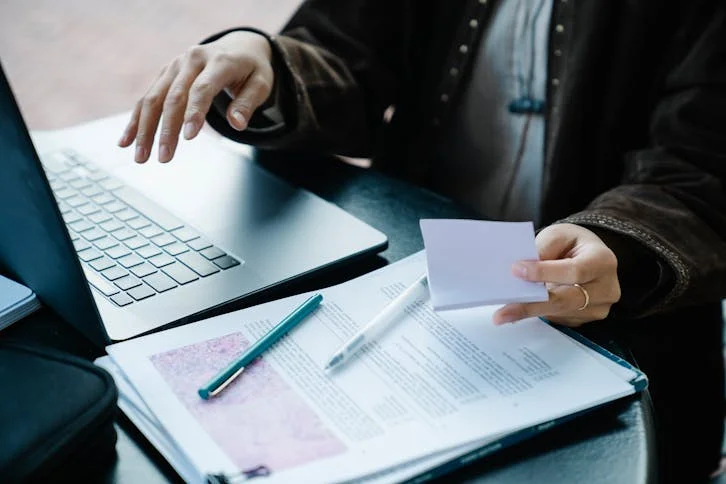
Understanding self plagiarism: navigating the intricacies of intellectual integrity
The concept of self-plagiarism is often misunderstood or overlooked within academic, scientific, and professional environments. Unlike straightforward plagiarism, which entails using someone else’s work without proper citation, self-plagiarism involves the deceptive recycling of one’s prior work and presenting it as new. This practice can significantly undermine the integrity and novelty expected in scholarly and professional outputs. This article answers the question, “Is self plagiarism a thing?” along with the complexities of self-plagiarism, detailing why it’s problematic, types of plagiarism, and strategies for prevention, thereby ensuring the maintenance of ethical standards in scholarly and professional practices.
What is self-plagiarism, and why is it wrong?
What is self plagiarism? Self-plagiarism happens when someone reuses large parts of their past work without citation, presenting it as new. It may falsify academic records and inflate productivity by misleading peers, educators, and article reviewers. Since transparency and originality are critical values in academic and professional writing, self-plagiarism violates ethics and the scholarly record. Self plagiarism raises ethical concerns and can lead to journal retractions, credibility loss, and academic punishments.
Ethical implications
The main ethical concern with self-plagiarism is misrepresentation. New information and insights are appreciated in academia and scientific research. Reusing earlier papers without disclosure undermines the integrity of intellectual discourse. It may pollute scientific databases with duplicated or slightly edited data. Meta-analyses and other secondary studies may be erroneous and waste necessary resources trying to find fresh insights. Disguising the amount of fresh information also undermines other researchers' efforts to progress the area with innovative results.
Forms of self-plagiarism: can you plagiarize yourself?
Self plagiarism manifests in various forms, each undermining the trust that the academic and research communities place in the creation of new knowledge and the integrity of educational contributions.
Copying entire sections without proper attribution
This particular form of self-plagiarism entails copying entire sections from one’s previous works into new submissions without appropriate attribution. When an academic or a researcher does this, it not only misleads reviewers and peers about the volume of original work presented but may also contravene specific academic or publication standards that require original contributions for each submission. Engaging in such questions as how to cite yourself undermines the integrity of scholarly research and can lead to widespread misinformation within the academic community. Other researchers, unaware of the duplication, might cite the work assuming it is entirely original, which further propagates errors and inaccuracies across the field. This problem emphasizes the necessity for thorough checks and balances within academic publishing to maintain the high standards expected in scholarly work.
Reusing substantial parts of previous work without acknowledgment
In the realm of academic research, it is not uncommon for researchers to revisit and build upon their previous ideas or analyses. However, the failure to properly acknowledge these past works and presenting the rehashed content as new findings amount to self-plagiarism. This situation results in multiple counts of the same intellectual contributions being recorded, which can artificially inflate a researcher’s academic output and mislead peer reviewers. The practice poses significant challenges to the educational evaluation process, which fundamentally depends on the originality and novelty of scholarly contributions. Acknowledging previous works is crucial not only for maintaining ethical standards but also for fostering a transparent and innovative research environment.
Submitting the same paper to multiple courses
The question “Can you plagiarize yourself?” often arises among students who submit the same paper to multiple courses. The definitive answer is yes; this act is recognized as self plagiarism unless it has been explicitly allowed by the course instructors. Such a practice falsely represents the paper as being uniquely prepared for each course, thus violating the core educational principles designed to evaluate a student’s effort and learning across different academic contexts. It is essential for educational institutions to clearly communicate their policies regarding self plagiarism to ensure students understand the implications of their actions on their academic integrity and learning outcomes.
Can you plagiarize yourself in multiple publications?
Self plagiarism involves exploiting one's empirical data in several research articles without attribution. Using the same dataset in several study contexts distorts the scientific literature and undermines systematic reviews and meta-analyses. Researchers must clearly report data reuse and distinguish between new and used datasets. Transparency is vital for scientific legitimacy and correct recognition and valuation of contributions.
Repurposing published content without clear indication
Publishers and readers are misled by self plagiarism when elements of previously published papers, books, or reports are rewritten without attribution. This behavior can damage publisher trust and contractual commitments, destroying the publishing industry's primary professional ties. Academic integrity and publication standards depend on properly citing all prior work. It ensures openness and ethical norms for scholarly communication's progress and legitimacy.
Harnessing paper services to navigate the complexities of self-plagiarism
As we delve into the nuances of self-plagiarism, it's crucial to understand not only its definition and ethical implications but also the practical solutions available to avoid such pitfalls. Essay writing services emerge as valuable allies in this journey. Paper writing services can guide students and professionals alike through the meticulous process of crafting original content while properly managing and citing previous works. By employing such services, the question “Can you plagiarize yourself?” can’t be so serious, ensuring that all written work adheres to the highest standards of academic integrity, thus maintaining ethical rigor throughout their educational journey. These services provide essential support, from developing initial ideas to finalizing entirely original pieces, thereby playing a pivotal role in preventing self plagiarism and fostering a culture of genuine scholarly contribution.
Preventing self-plagiarism
Addressing and preventing self plagiarism is crucial for upholding the integrity and novelty of scholarly and professional works. Effective strategies are outlined below.
Properly citing your previous work
Even when citing one's work, appropriate citation is essential to avoiding self-plagiarism. Understanding how to cite yourself requires the same principles as citing others: clearly indicate which content is being reused and provide the necessary references so readers can trace back to the original context and fully understand the new contribution. Proper citation ensures ethical behavior and enriches scholarly conversation. It defines the flow of ideas and research, giving a framework for academic arguments. This method provides academic integrity and a transparent, ethical atmosphere for idea development.
Writing tip from SpeedyPaper
Developing fresh and original content
A deep commitment to creating original content for each new project or publication not only meets ethical standards but also contributes significantly to the enrichment of the academic or professional fields. This dedication to originality promotes genuine innovation and reflects actual intellectual growth and effort. Researchers and professionals who consistently strive to introduce new insights uphold a dynamic and progressive trajectory in their respective fields. Understanding self plagiarism definition and ensuring that each contribution is both valuable and original is crucial for maintaining the vitality and relevance of professional and academic environments. By prioritizing innovation, individuals can contribute to their fields in meaningful ways that advance knowledge and practice, keeping the educational and professional landscapes vibrant and forward-moving.
Seeking permission to republish existing work
In cases where republishing content is necessary, obtaining permission from previous publishers is essential. This practice ensures adherence to copyright laws and publishing guidelines, safeguarding against legal and ethical issues. Whether it's reusing an illustrative figure or a substantial text excerpt, seeking and receiving proper authorization is a critical step in maintaining the integrity of both the new and original publications.
Securing permissions for republishing materials ensures a respectful and lawful approach to content reuse. It is essential when an author wishes to include previously published work in a new publication, whether in a different context or as part of a compilation. This straightforward yet crucial step helps preserve the trust relationship between authors, publishers, and the wider reader community and also prevents potential claims of self plagiarism. When permissions are clearly sought and granted, it also reinforces the transparency and credibility of the scholarly communication process.
FAQ
Is reusing my work considered self-plagiarism?
Yes, reusing your work without proper citation or acknowledgment is considered self plagiarism. In academic, research, and professional contexts, every work submitted is expected to be original unless otherwise cited or referenced. Reusing one’s own previously published data, text, or ideas without acknowledging their source misleads the audience about the novelty of the work and violates ethical standards. It's essential to disclose any reuse and provide proper citations to maintain integrity and transparency.
Is it acceptable to submit the same paper for different courses if I wrote it?
Submitting the same paper or significant portions thereof to different courses is generally only acceptable if the instructors explicitly permit it. This practice is considered self-plagiarism because it misrepresents the work as newly and uniquely prepared for each course. Educational institutions expect each assignment to reflect new efforts and learning specific to each course’s objectives. Students should always seek clarity from their instructors regarding the reuse of previous works and ensure that all submissions are tailored to meet the specific requirements of each class.
Should I cite myself if I use my own previously published work?
In a word, yes. Suppose you are going to reuse your past works in new academic or professional contexts. In that case, it is essential that you properly cite them. Understanding how to cite your own work ensures that readers or reviewers are informed that elements of the new piece have been derived from previous publications. The provision of a transparent trail for the development of your ideas and research ensures that academic integrity is maintained.




Comments (0)
Thank you for your comment! 🌟
It has been submitted and is awaiting moderation. Stay tuned—it will be visible soon!